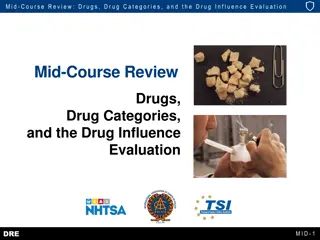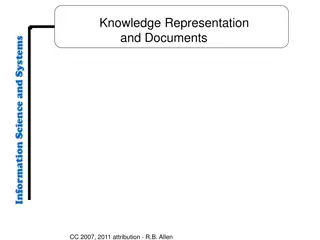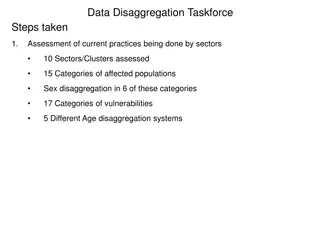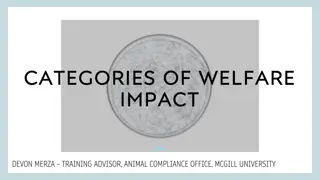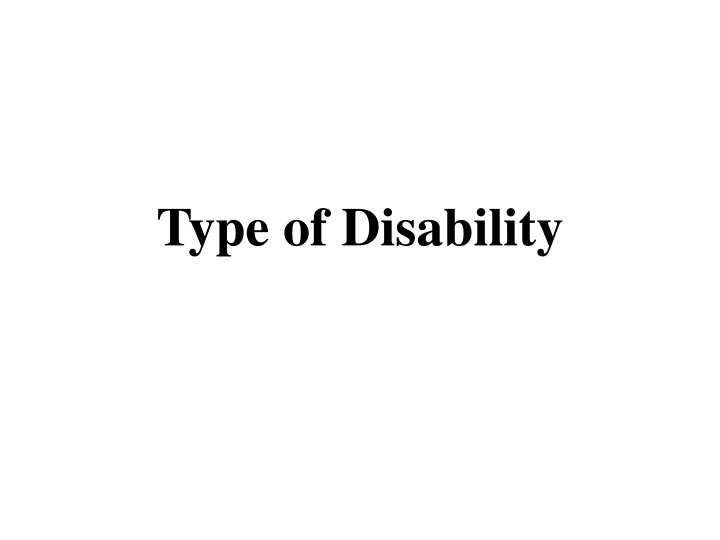
Different Types of Disabilities and Impairments
Explore the various categories of disabilities including physical, sensory, visual, hearing, olfactory, gustatory impairments, balance disorder, intellectual and developmental disabilities. Gain insights into conditions that impact physical and sensory functions, vision, hearing, smell, taste, touch, temperature discrimination, and pain perception.
Download Presentation

Please find below an Image/Link to download the presentation.
The content on the website is provided AS IS for your information and personal use only. It may not be sold, licensed, or shared on other websites without obtaining consent from the author. If you encounter any issues during the download, it is possible that the publisher has removed the file from their server.
You are allowed to download the files provided on this website for personal or commercial use, subject to the condition that they are used lawfully. All files are the property of their respective owners.
The content on the website is provided AS IS for your information and personal use only. It may not be sold, licensed, or shared on other websites without obtaining consent from the author.
E N D
Presentation Transcript
Types of Disabilities In general, we can divide the disabilities into the following types: Mentally Retardation Visual Impaired Hearing Impaired Physically Handicapped Multiple Disability
But in the broader sense, we can divide the disabilities, into the following categories. Physical Disability Sensory Disability Visual Impairment Hearing Impairment Olfactory and Gustatory Impairment Somatosensory Impairment Balance Disorder Intellectual Disability Mental Health and Emotional Disabilities Developmental Disability
Physical Disability: Any impairment which limits the physical function or ability of the limb(s).
Sensory Disability is Impairment of the senses. Visual Impairment / Vision Impairment: Visual Impairment is the term experts use to describe any kind of vision loss, whether it's someone who cannot see at all or someone who has partial vision loss. i.e. Blindness: The persons with No Visual Function, i.e. no light perception. Low Vision: the persons having low visual function. The eye has different parts that work together to create our ability to see. When a part of the eye doesn t work right or communicate well with the brain, vision is impaired.
Hearing Impairment: It includes people that are completely or partially deaf. It is the conditions in which individuals are fully or partially unable to detect at least some frequencies of sound which can usually be heard by most people. Olfactory and Gustatory Impairment: It is the Impairment / defect in the sense of smell and taste. Olfactory impairment refers to the loss of smell. Gustatory impairment refers to the loss of taste
Somatosensory Impairment: It refers to the sensations / feelings arising from the skin. These sensations include the ability to feel light touch, discriminate temperature, identify an object through the sense of touch, discriminate the sharpness of an object, and the ability to feel pain.
Balance Disorder: A balance disorder is a disturbance that causes an individual unstable, for example when standing or walking. A balance disorder is a condition that makes an individual feel unsteady or faint. If someone is standing, sitting, or lying down, he/she might feel as if he/she is moving, spinning, or floating.
Intellectual Disability: Intellectual disability is a broad concept that ranges from mental retardation to cognitive deficits. Mental Health and Emotional Disabilities: A mental disorder or mental illness is a psychological or behavioral pattern generally associated with subjective distress or disability that occurs in an individual.
Developmental Disability: It is any disability that results in problems with growth and development.







